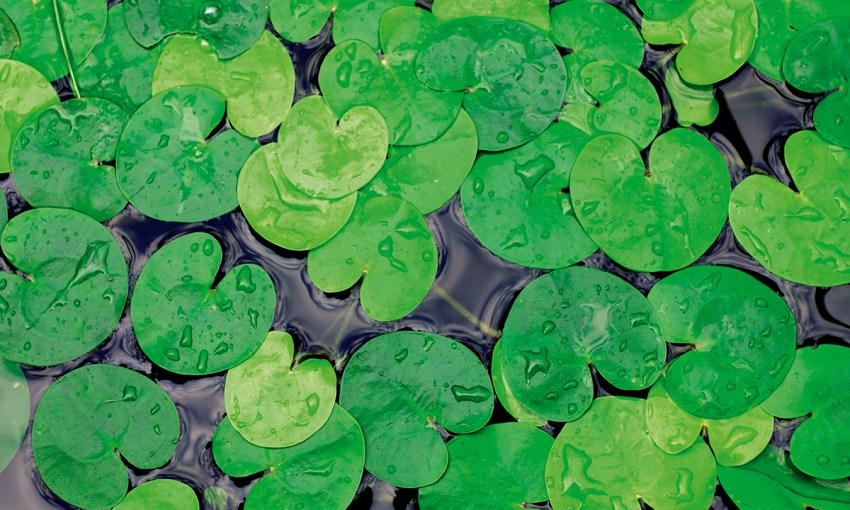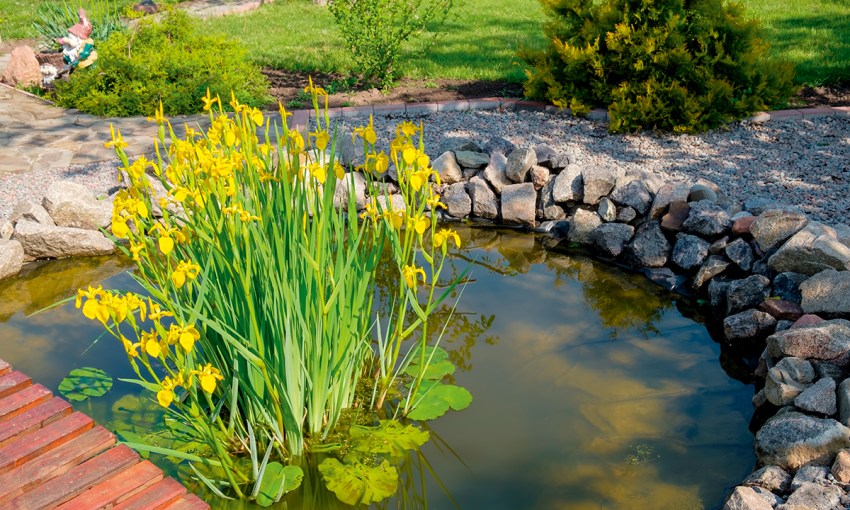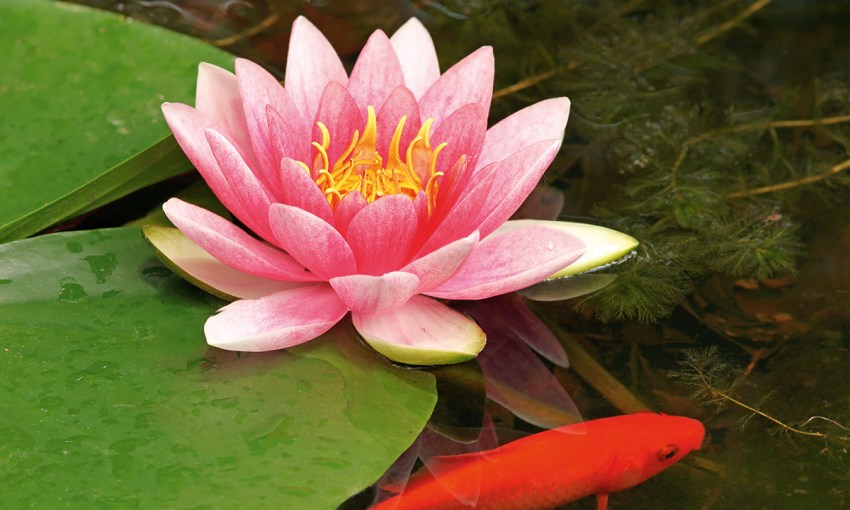Creating and maintaining a living water feature in your garden is easier than you might think, and the calming effect will transform your space.
Get some pond life in your garden
Ponds bring a tranquil atmosphere to the garden with soothing sounds, mesmerising reflections and sparkles of light. They offer a place for relaxation, contemplation and to entertain family and friends; they are a drawcard to any outdoor space. With the right selection of plants, you will achieve the perfect balance for clear, healthy water, creating an idyllic habitat for fish, frogs, dragonflies and butterflies.
Ponds can come in all shapes and sizes. If you have the space, nothing beats an inground pond surrounded and filled with water plants and fish. These can be dug out, formed and lined, or a pre-moulded plastic liner can be dug into the ground and built around.
Don’t despair if your space is on the smaller side; ponds can help create an illusion of depth. You may instead wish to consider a beautiful glazed, waterproofed pot or shallow dish with some feature plants to sit in your courtyard.

No matter the type of pond that you choose to install, the ideal position is a sunny space that receives at least six hours of daylight. This will ensure all your water plants will thrive. A low spot in your garden, or one that collects water after a rain event, should be avoided as this may cause overflow and flooding issues. It is also ideal to avoid areas with a lot of overhanging branches, as leaves dropping into your water can foul the water, and increase maintenance requirements.
Ponds are often overlooked in landscape design as an unnecessary feature that create additional work and effort. However, ponds require little maintenance after their initial installation and establishment, especially if you invest in a filter system, or incorporate the right balance of specific varieties of plants that help to naturally filter water, and fish that help keep the water clear of algae.
So, what plants should you incorporate?

There are four main types of water-dwelling plants that will bring different benefits: oxygenators, floating, submersibles and, marginal and bog plants. To enjoy the benefits of all of them, your design may require some thought as each plant category requires different depths of water. Adding some shallow ledges around your pond will create various depths of water, allowing you to have an array of plants.
Marginal and bog plants thrive at the water’s edge, either standing in shallow water with their pot just covered or planted in moist, wet soil, softening the line between water and land. This group of plants will provide you with seasonal interest as many produce colourful flowers and many have dramatic foliage. Popular marginal plants include Marsilea drummondii, water hibiscus and fishbone water fern. Plants such as water iris, Ficinia nodosa and Mazus pumilio are suitable for being planted in damp, muddy positions.
Oxygenator plants are an essential part of any pond’s natural ecosystem; two plants per square metre is ideal. Not only do they provide oxygen, they also adsorb nutrients directly through their leaves, which would normally feed algae, resulting in a clearer waterway. Triglochin procerum, Hippuris vulgaris and Myriophyllum papillosum are must-haves.

Floating plants, such as duckweed and water lettuce, grow along the top of the water, helping suppress algae and, together with submersible plants, provide fantastic shade and safe hiding spots for fish. Ensure a depth of 50cm or more for submersibles, whose leaves and flowers float on the water’s surface. Plant submersibles in pots with potting mix designed for water plants, with a thin layer of gravel on the top to ensure the soil stays put, and scatter these throughout the pond. Waterlilies and water poppies are very popular submersibles.
After your pond has settled for two weeks, you will want to start exploring the option of introducing fish. Fish are an integral part of pond design as they act as the biological control in the ecosystem, minimising the upkeep and maintenance you will need to do. They help keep algae at bay and eat insect larvae, helping to keep the water clear and any mosquito issues to a minimum. Goldfish, fantails, moors, comets and shubunkins are all suitable fish that are easily established.

Before introducing your new fish into your pond, allow them to float in the pond in the plastic bag you’ve bought them home in for an hour before releasing them. This allows their water temperature to slowly adjust and will help minimise any shock to the fish. It is also important to keep your pond topped up to eliminate the need to add a lot of water at once, again, this can cause shock to your fish and plants. If you are utilising mains water, you may wish to consider investing in a water conditioner.
Visit your local garden centre to discuss your pond ideas and check out all the assorted plants that are available. There is no doubt you will love your new pond set up, and the incredibly diverse ecosystem it will create in your very own back yard.
This story first appeared in the October 2020 issue of SALIFE magazine.



